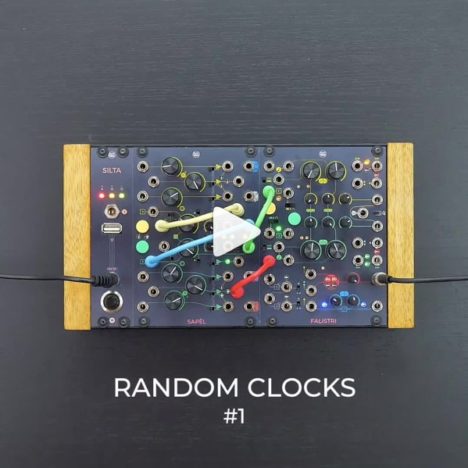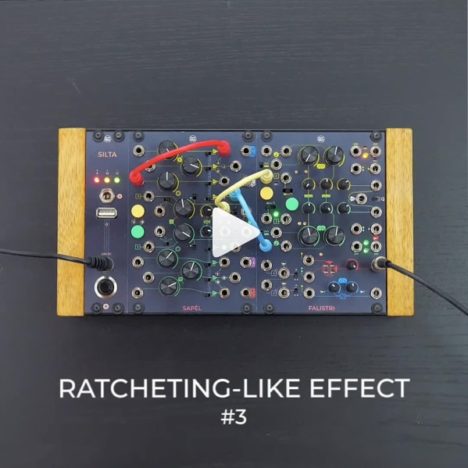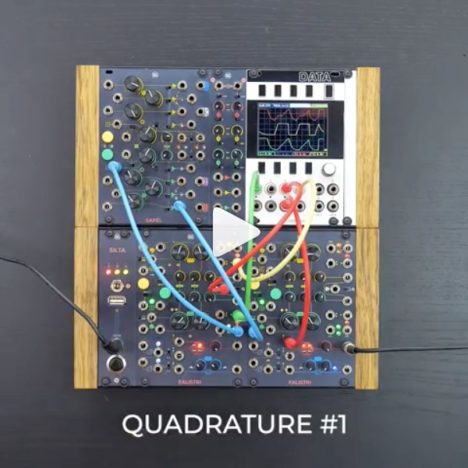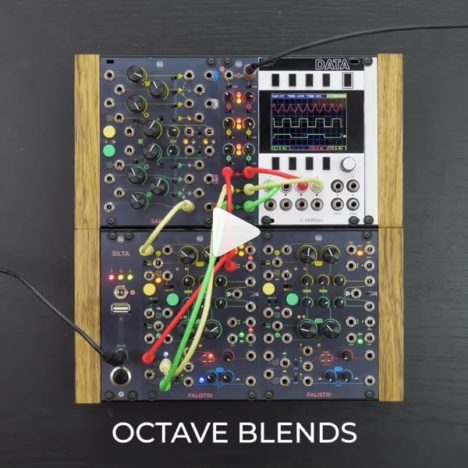- EURORACK
- BAGÀI
- 411
- CUNSA – Sound Seasoning
- CGM – Creative Mixer Series
- BRENSO – Entangled Sound Sources
- USTA – The Voltage Score
- FALISTRI – Movement Manager
- SAPÈL – Tamed Random Source
- FUMANA – Dual 16 Bands Spectral Editor
- 321 – Scale + Flip + Shift + Combine
- 333 – ProAudio Sum & Distribution
- SILTA 2016 – discontinued
- SEI – trunk lines – discontinued
- UNO – foldable case
- PLUS – modular modular case
- ACCESSORIES
- KNOBS
- 500 SERIES
- RESOURCES
- RESELLERS
- ABOUT
- ACCOUNT
Tag / sapèl
-
Stage Shift
Pick random notes, but only among those YOU defined! With the Stage Shift function, USTA will use any external CV to pick other notes from the pattern than the ones associated with the stage. The cool part is that the rhythmic structure of the Length layer will stay the same!
2020-11-02 -
Timbre Randomness
Sometimes it’s all about having fun. And with SAPÈL and BRENSO, it’s A LOT of fun! Simply patch the Random Clock out to the Ping input, then route the S&H out to the four Timbre parameters through the Timbre Modulation Bus. Then, sit back and enjoy this ever-changing rhythm!
2020-08-31 -
Root Shift
Time to play modal! The Root Shift is a modulation that takes any incoming CV and shifts the root of your quantization mask. The result is a dramatic change in the song mood, but if you route the same CV to the Pitch Shift modulation, you will transpose the whole scale!
2020-04-28 -
Voice Spread #1
We’ve seen the 333 as an audio mixer, but it does pretty well also with CVs!
2020-03-31 -
Pitch Shift
USTA features two independent CV inputs, whose signal can be internally routed to several destinations (independently per track, of course).
2020-03-31 -
Hold
It’s time to push those buttons! It is true, we added buttons to FALISTRI and SAPÈL so that you can manually trig the envelopes or the S&H. But there’s another reason: if you hold them pushed, you can give to your patch a very dramatic effect by momentarily “freezing” it…
2019-11-06 -
Random Clocks #1
Random trigs with some SAPÈL self-patching! In this patch we’ll use the yellow main clock out to control the green one, then we’ll add some cross-patching within the yellow section to achieve some unpredictability.
2019-09-23 -
Ratcheting-Like Effect #3
What about trying some random repetitions? In this patch, a random ratcheting-like effect is obtained by using SAPÈL’s Random Clock to trig the envelope controlling the amplitude, while the clock density (or the ratcheting number) is varied through cross-patching.
2019-09-23 -
Quadrature #1
Patch the EOR output into the first frequency divider input, mix all the (bipolar!) outputs into your 321 and fatten up your sound with every possible blend of three octaves!
2019-09-03 -
Octave Blends
Patch the EOR output into the first frequency divider input, mix all the (bipolar!) outputs into your 321 and fatten up your sound with every possible blend of three octaves!
2019-09-03
Categories
Recent Posts
- CUNSA v/s FUMANA: The same patch on two different filters!
- Subharmonic formant arpeggios patch breakdown: a classic Falistri patch!
- Memes aside, let’s make Sandstorm by Darude on our Frap Tools system
- Four tips to use CUNSA as a sound source (including ringing and additive synthesis)
- ‘Glass sounds‘ analog through-zero FM patch breakdown with Brenso and Cunsa!









